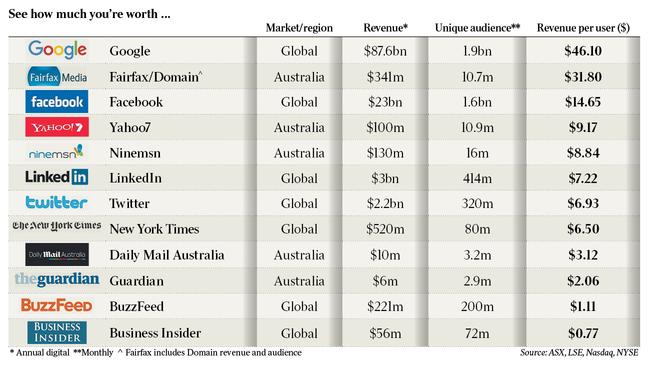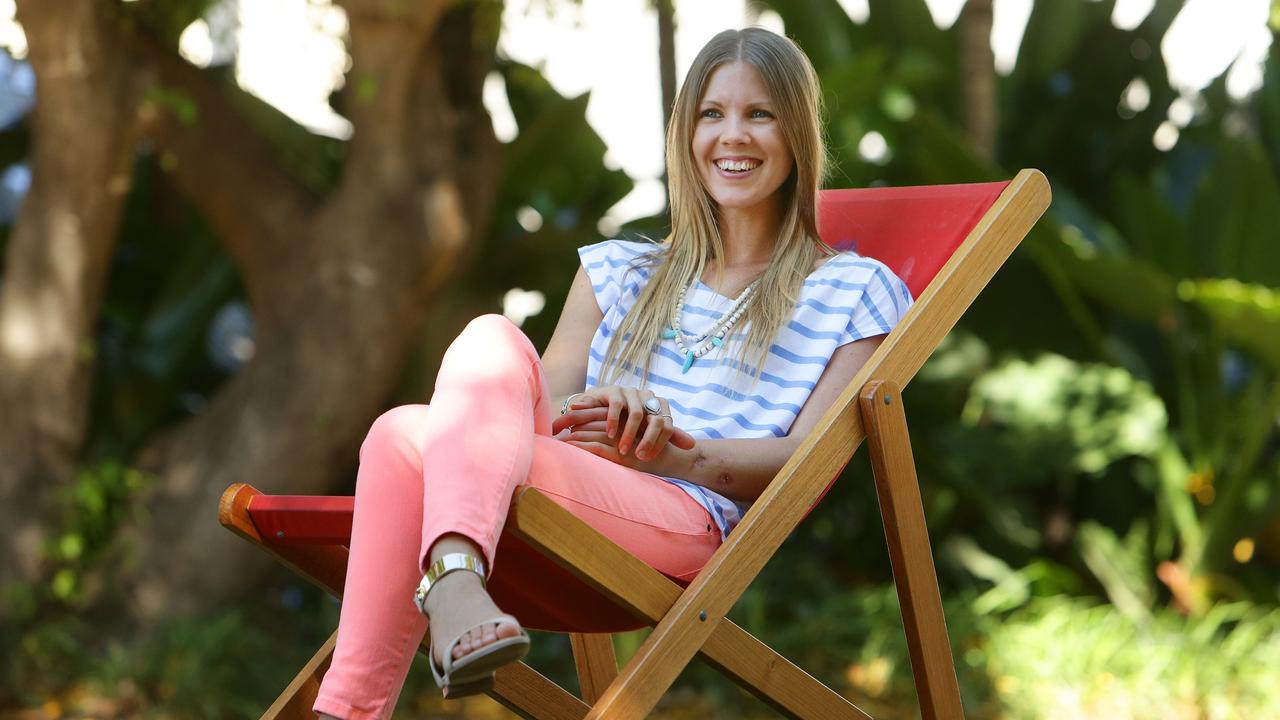Facebook, Google squeeze online news sites
How Facebook buries news has shed light on its huge power.

How Facebook buries news has shed light on its huge power, writes Darren Davidson.
Online news media outlets have a Facebook and Google problem. What isn’t clear yet is which one will be the first to step forward with a solution.
The US internet giants are squeezing the revenue and profit pool of local content creators. What’s more, the rate of leakage to these companies is not slowing down; if anything it is gathering pace, as more advertising dollars are concentrated with Facebook and Google.
That’s the conclusion reached by an analysis carried out by The Australian, which undertook an evaluation of revenue-per-user across the local media landscape.
Free news sites are the most exposed. Some are at the point of death. To the surprise of many digital evangelisers, newspaper paywalls do work by creating an alternative revenue stream to sustain quality journalism.
Despite the digital world’s crowing about advertising growth, and the belief of some publishers that digital ad revenue would surely replace print ad dollars, revenue-per-user for free sites is alarmingly low as online ad rates continue to drop.
Guardian Australia, Daily Mail Australia, BuzzFeed and Business Insider fight for scraps at the skinny point of an inverted pyramid. Daily Mail Australia’s revenue-per-user was just $3.12 in 2015, while BuzzFeed is even lower at $1.11. These sites are unlikely to be even close to a margin of safety. They are almost certainly incurring losses.
Guardian Australia’s estimated revenue-per-user amounted to a meagre $2.06 despite a big online audience, highlighting why senior journalists at the newspaper voiced concerns over the return of Alan Rusbridger.
The former editor-in-chief of The Guardian, however, announced on Friday he would not return as chairman of Scott Trust, which owns publisher Guardian Media Group. The prospect of Rusbridger taking the powerful position focused staff’s attention on his flawed “open journalism” model.
John Miskelly, chief digital officer for Australia’s largest media buying group, GroupM, says the large, drive-by audiences assembled by free sites are less valuable to an advertiser than a digital subscriber.
“We believe context and environment is important; that’s why we invest in print titles and premium titles like Vogue Australia,” said Miskelly. “People that pay for content tend to be in a higher-income bracket, which makes them more desirable to advertisers.”
Journalists axed by Fairfax chief executive Greg Hywood in last week’s forced redundancy round can be seen as casualties in the race for cheap digital traffic as The Sydney Morning Herald and The Age pursue a destructive click bait strategy.
While Fairfax has revenue-per-user of $31.80, the vast majority is generated by digital real estate business Domain. Hywood’s persistent drive for savings continually asks: how cheaply can the mastheads acquire news, and how many cents more will advertisers pay for it?
The problem is that as advertisers pay less, the sites must produce more content, more cheaply.
Higher up the scale, a soft paywall pushes The New York Times into a middle ground with revenue per user of $6.50 as it continues to make headway with efforts to enlarge a growing web and mobile audience without undermining solid digital subscription revenue.
Although News Corp declined the opportunity to provide information for this analysis because it does not publicly disclose detailed financial results on a region-by-region basis, The Australian’s chief executive Nicholas Gray said a diversified sales mix had put the paper in a “strong position”.
For free sites, the solutions are worse than even the present challenge, with publishers ceding their businesses and relationship to their readers to Facebook and Google — two businesses that are aggressively competing with them for eyeballs and ad dollars.
The distributed content model has become a fast-expanding, high-margin source of revenue for Facebook. But it is clear the presence of news articles on these platforms is hurting publishers.
In exchange for the big audiences promised by these platforms, publishers have had to make a significant trade-off, allowing their stories to be published outside their own websites. Publishers lose control over their audience, which could be disrupted and made obsolete by changes to Facebook’s algorithm at any time.
Just last week, Mark Zuckerberg was forced to defend the social network against damaging accusations it routinely buries politically conservative news, and promotes stories that it deems important.
Our analysis shows Google’s revenue-per-user soared to $46.10, while Facebook had $14.65, underscoring the value shift from the content creators to the content aggregators.
Morgan Stanley analyst Andrew McLeod has estimated that Facebook and Google are “taking all the ad market growth, and then some”.
In calendar year 2016, McLeod has estimated that these operators will collectively extract $4 billion to $5bn worth of ad revenue — representing 35-40 per cent share of the total pool of ad revenues in Australia’s $13.9bn ad market.
“It’s a big number and critically, it’s growing fast,” said McLeod, estimating the leakage to global players increased 24 per cent or $1bn last year.
One thing is clear from our analysis: free costs too much. Until publishers find a better way to monetise their content, Facebook and Google will continue to be the real winners.
In an effort to get some sense of sense of normalisation and comparable data, our analysis used the last available full year digital revenue figure, and the most recent Nielsen Digital Ratings Monthly data (March).



